| |
This page describes the main components that you will
need to build a PC from scratch.
Click here
to view the first page of the instructions
Why would you want to?
There are many cheap systems available today, and the range can be
quite bewildering. Often these low price high value systems provide
a basic range of features and some of these features will hardly ever
be needed, whilst others are simply not adequate and will need to be
upgraded.
Building your own PC from individual components means that you can
install just the components that you require and use powerful components
that will not need to be upgraded. You can also make sure that the components
are designed to work together without causing problems.
Inevitably, a commercial product has to compromise its design due to
supply problems or cost considerations. Your own custom built system
can allow you to closely match components to maximise performance.
It is also great fun!
What parts do you need?
The minimum set of components that you need are:-
Case
 |
Cases come in two main types, desktop (sometimes
called pancake or pizza style) and tower. Tower cases are either
full height (approximately 62 cm high), midi (42cm high) and mini
(35cm high). You should specify a case large enough to hold all
the components that you are planning to use. It is important that
you choose an ATX style case, which refers to the type of motherboard
that we are going to use. The case usually comes with an integral
Power Supply Unit, which must be correctly rated for the type
of components that you are going to install. |
Motherboard
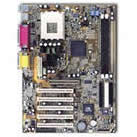 |
The motherboard is crucial. It is the component
that links all of the PC components together using a whole range
of technologies. Make sure that you choose a motherboard that
is compatible with the kind of processor that you have bought,
the graphics card that you will be using, and that it has enough
PCI slots for the "goodies" that you are going to install.
Some motherboards support USB 2.0 or Firewire which provide extremely
fast data transfer, and use UDMA 100 data buses for connecting
high speed hard drives.
The motherboard may also offer on board sound, on board video,
on board modem and on board LAN connections. All of these features
are useful, except for the on board video because you will almost
certainly need a higher specification dedicated graphics card. |
Graphics Card
 |
Most motherboards need a separate graphics card.
There are many different models and new developments mean that
the specification of graphics cards are improving constantly.
The graphics card is actually a sophisticated computer system
in it own right, and contains all the components of a computer
system. The card has a large amount of on board memory, often
as much as 128 Mbytes. |
Sound Card
 |
It is very common to have a motherboard with
a built in sound card. Whilst this will be adequate for most users,
you may want to buy a more advanced card. These offer a large
range of features, and most cards include games controller ports,
microphone input, and additional features such as optical connections
to advanced sound systems. |
Processor
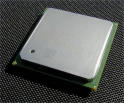 |
It is not my intention to debate the merits of
various types of processor, basically you have two main options,
Intel and AMD. I have built several systems now, and have always
used Intel processors. Whenever somebody describes a problem with
a system that they have configured themselves, they have used
an AMD Athlon chip, so my conclusion is that Intel is safe and
Athlon is not! Whatever processor you use, you should make sure
that the case that you have specified includes a power supply
unit (PSU) that is correctly rated for the processor. Athlons,
in general, use more power, create more heat, and are slightly
cheaper than Intel. AMD are also winning the "fastest"
processor war at the moment. |
Memory
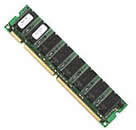 |
Once upon a time, many moons ago, the only decision
that you needed to make regarding memory was how much could you
afford! There are now several different types, and the price has
fallen considerably. Check which kind your motherboard manufacturer
recommends and buy as much as you can afford.
The memory is also available to run at different clock speeds
and you should match the memory speed to the motherboard clock
frequency.
Have
a look at more facts about computer memory by clicking on this
link |
Hard Drive
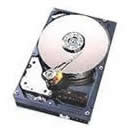 |
The Hard Drive is an extremely important part
of your system. It is obliviously the main non volatile storage
(it doesn't"forget" when you turn it off), but it is
also in constant use, accessing work files, temporary files, loading
the Operating System, etc. The speed of your hard drive is critical,
and you should purchase the fastest drive that you can afford
and your motherboard supports. Currently UDMA 100 capable motherboards
with UDMA 100 hard drives running at 7200 rpm provide quite a
high performance.
As for size, go for the largest drive that you can afford! You
should bear in mind that there are currently some issues surrounding
drives larger than 127Gigabytes. |
CDROMs etc
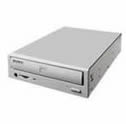

|
A CD drive of some description is
essential. You can now buy combined CDRW/DVD drives quite cheaply
which will allow you to use the CDRW drive as a backup storage
device. It is also useful to have a normal CD ROM drive as well
as the CDRW, but check that your motherboard has enough IDE connections
to allow this.
Floppy disks are also useful, and for about a fiver, they are
not worth missing off! |
Click here
to view the first page of the instructions
|








